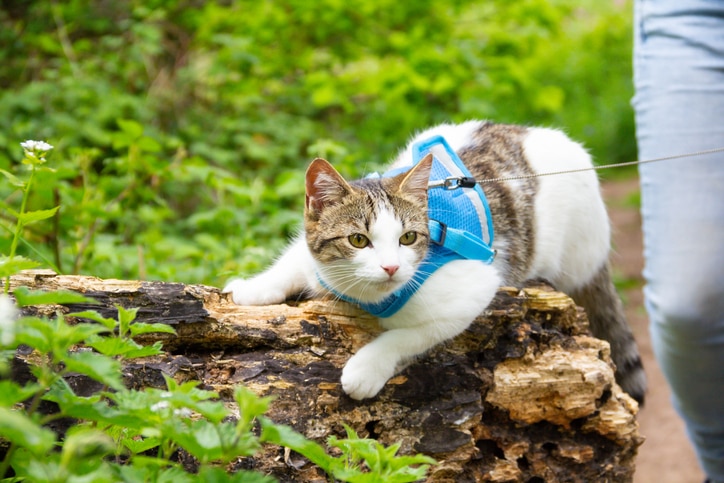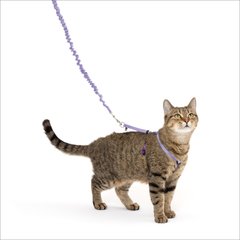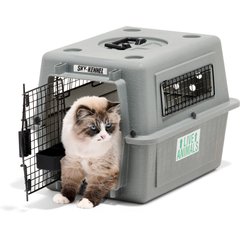Do Cats Really Have Nine Lives?

Photo by Eileen Groome/iStock/Getty Images Plus
We’ve all heard the saying cats have nine lives—but where did this myth come from, and why is it still around today? Here’s a look at its origins and how cats’ impressive biology led to an enduring legend.
Key Takeaways:
- The myth that cats have nine lives most likely originated in ancient Egypt.
- Cats have physical attributes—like flexibility and agility—that make them seem lucky.
- Felines also have some superpowers, like excellent night vision and an extraordinary sense of hearing.
Why Do People Say Cats Have Nine Lives?
One of the most compelling connections comes from ancient Egypt, where cats were considered sacred. The sun god Atum was said to take the form of a cat when visiting the underworld. Atum was also the creator of the Ennead, a group of nine deities. So, nine lives from one divine “cat”—sound familiar?
But this myth wasn’t exclusive to Egypt. An old English proverb says, “A cat has nine lives. For three he plays, for three he strays, and for the last three he stays.” While we don’t know the date of this proverb, it’s possible it inspired various literary references, including one by Shakespeare in the 1590s.
In Romeo and Juliet, Mercutio calls Tybalt “good king of cats” and threatens to take one of his “nine lives.” More than a century later, writer Thomas Fuller referenced the saying in his 1732 book, “Gnomologia.” He wrote, “A cat has nine lives, and a woman has nine cats’ lives.”
While the latter reference is a bit murky (sorry, Fuller), the myth persists. Over 5,000 people search “do cats have nine lives” on Google every month.
But not everyone is settled on nine lives. In some Spanish-speaking cultures, cats are said to have seven lives. In Turkish and Arabic traditions, it’s six.
Regardless of the number, the message is the same: Cats are survivors. There are countless stories of cats who’ve fallen from high-rise buildings, survived being stuck in car engines, or made it home after being lost for months or even years.
One of the most famous examples is Unsinkable Sam, a cat who reportedly survived three separate shipwrecks during World War II. Another cat named Sugar fell 19 stories (150 to 200 feet) from an apartment building and walked away with only a bruised lung. And don’t forget Scarlett, the mother cat who rescued her kittens from a fire one by one, despite being burned herself.
These stories fuel the myth because cats just keep proving how amazing they are.
Why Do Cats Seem to Be So Lucky?
Even though cats don’t actually have nine lives, they do have an impressive set of physical abilities that inspired this belief.
They’re Flexible
If you’ve ever seen a cat squeeze themselves into a space that looks far too small for them, you’ve seen their flexibility in action. This “if I fits, I sits” ability is thanks to their elastic spines and unique clavicles that are attached to muscle instead of bone.
This lets them fit through openings that are barely wider than their heads and twist through impossibly narrow spaces like that spot behind your washing machine.
They’re Agile
Watch next time your cat gets the zoomies—that is, the way they navigate around furniture at top speed and land gracefully after taking a flying leap. Their pliable spines and powerful muscles allow them to make these smooth, rapid movements.
Being relatively lightweight also gives cats a huge advantage when changing direction mid-run or sticking a landing from your highest bookshelf.
They Tend to Land on Their Feet
Landing on their feet might be cats’ most iconic survival trick. The “righting reflex” is an automatic response that helps them reorient their bodies during a fall.
A specialized balance system in their inner ears (called vestibular apparatus) lets them figure out which way is up, and their spine allows for midair twisting and turning.
This is why cats often land on their feet and how they can (sometimes) survive falls without serious injuries.
They Have Amazing Balance
Ever wonder how your cat can walk confidently across the top of a fence or along the edge of your bathtub? Their inner ear contains sensitive balance sensors (yes, the same ones that help them during a fall) that constantly monitor their body position and make automatic adjustments to keep them steady.
Their tail also plays an important role, acting as a counterbalance that helps them make tiny corrections on narrow surfaces without falling.
They Have Supercharged Senses
A cat’s hearing is so sharp that they can detect sounds up to 1.6 octaves higher than humans, which means they often know danger is coming long before we do.
Their night vision is also much better than ours, thanks to a special reflective layer in their eyes called tapetum lucidum. This gives them a huge advantage in low-light situations.
How To Help Keep Your Cat Safe and Healthy
Cats may be extraordinary, but they aren’t invincible. It’s up to us as pet parents to reduce unnecessary risks so they stay safe and healthy throughout their (one) lifetime.
Here are a few steps you can take to protect your feline friend:
- When you take your cat outside, ensure they’re on a harness and leash. This will prevent them from eating things they shouldn’t, and will keep them away from cars, dogs, and other wildlife.
Recommended Products
- If you take your cat on trips or to the vet, ensure they’re secure in a cat carrier or cat kennel. This will prevent them from accidentally escaping.
Recommended Products
- Keep your cat on regular flea and tick and heartworm preventatives, especially if they frequent the outdoors.
Recommended Products










